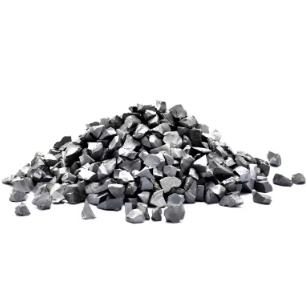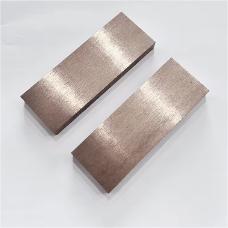**The Hidden Metal Secret: Why Shoemakers Rely on Sturdy Shoe Lasts**
(Do Shoe Lasts Have Metal Plates On The Bottom)
Ever peeked inside a shoe factory? You might spot strange, foot-shaped forms everywhere. These are shoe lasts, the silent heroes shaping every pair of boots, sneakers, or heels. But look closer. Do those lasts have metal plates on the bottom? The answer is a resounding “Yes!” for many. Let’s dive into the world of these essential tools and uncover the metal mystery.
**1. What Exactly is a Shoe Last (and Where’s the Metal)?**
A shoe last is the solid mold a shoemaker uses. It determines the shoe’s final shape, size, and fit. Think of it as the skeleton inside the shoe while it’s being built. The upper material gets stretched tightly over the last. The sole gets attached directly to it. This process gives the shoe its precise form.
So, where does the metal come in? Often, right on the bottom. Specifically, a flat metal plate gets firmly attached to the sole area of the last. This plate isn’t decorative. It’s a critical functional component. It provides a strong, stable base during the entire shoemaking process. The plate acts like an anchor point for machinery. It allows the last to be securely clamped into place during operations like sole nailing, gluing, or heel attachment. Without this plate, the last could shift or even get damaged by the powerful machines.
**2. Why Metal Plates Are Crucial for Shoe Lasts**
Why go through the trouble of adding metal? Why not just use wood or plastic alone? The reasons are practical and essential for quality shoe production.
First, durability. Shoemaking involves significant force. Machines hammer nails, press soles, and apply strong adhesives. A pure wood or plastic last bottom would quickly get chewed up. The metal plate takes the punishment. It protects the last material underneath from dents, gouges, and wear. This makes the last last much longer.
Second, stability. Precision is key in shoemaking. The last must not move a millimeter when soles are being attached. That metal plate provides an incredibly rigid, non-slip surface for clamps and holders on the machinery. It locks the last solidly in position. This ensures perfect alignment every time. A wobbling last means a crooked sole. The metal plate prevents that.
Third, workflow efficiency. Many factories use automated lines. Robots or conveyors need a standard, reliable way to grab and position each last. The metal plate offers this consistent mounting point. It streamlines the entire production process. Faster, more reliable assembly means more shoes made well.
**3. How Metal Plates Are Attached to Shoe Lasts**
Attaching the plate isn’t just slapping metal onto wood or plastic. It’s a precise process ensuring a permanent, flat bond.
The most common method involves screws. Craftsmen carefully position the metal plate flush onto the bottom of the shaped last. They then drill pilot holes through the plate and into the last material. Strong screws get driven deep into the last body. This creates a mechanical lock. Sometimes, industrial adhesives supplement the screws for extra security. The goal is zero movement between plate and last.
The plate itself is usually steel. Steel offers the perfect blend of strength, hardness, and cost-effectiveness. It resists bending and denting under pressure. The plate is cut to match the sole profile of the last. It covers the key areas where machinery will clamp or where fasteners (like nails) will be driven through the sole material into the last. The surface is often smooth. Sometimes it features small holes or indentations. These help gripping mechanisms on machines hold it even tighter.
**4. Applications: Where Metal-Plated Lasts Shine**
Not every single last has a metal plate. Simple, lightweight shoes made with cementing might use lasts without. But metal plates become vital for specific techniques and shoe types.
Lasting and Sole Attachment: This is the core job. The plate allows the last to be clamped tightly in lasting machines. These machines pull the upper leather or fabric taut over the last. The plate also holds the last rock-steady during sole attachment. Whether using nails, staples, heavy-duty glue, or a combination, the force involved is huge. The metal plate absorbs it.
Heavy-Duty Footwear: Think work boots, hiking boots, or military footwear. These require incredibly strong construction. Often, thick soles get nailed directly to the insole and last. The forces used to drive those nails are immense. A metal plate is non-negotiable here. It prevents the last from splitting or cracking under the hammering.
High-Volume Factories: Speed and consistency are king. Automated lines rely on lasts that can be instantly grabbed, positioned, and released by machines. The standardized metal plate makes this automation possible. It ensures every last interfaces perfectly with the equipment. This drives efficiency and consistent quality at scale.
**5. FAQs About Shoe Lasts and Metal Plates**
Let’s tackle some common questions head-on.
* **Are metal plates on every shoe last?** No. Simple slip-ons or shoes made solely with cementing might use lasts without plates. Plates are essential for lasting machines and nailed/stapled construction.
* **Does the metal plate affect the shoe’s fit?** Absolutely not. The plate is purely part of the tool. It sits underneath the last. The foot shape of the last itself, the part contacting the shoe materials, remains unchanged. The plate is only for the manufacturing process.
* **What happens if a last doesn’t have a plate?** For techniques requiring clamping or nailing, it would be difficult or impossible. The last could slip in machines. It could get damaged quickly. The sole attachment could be misaligned. Production would slow down. Quality would suffer.
* **Can you see the metal plate on the finished shoe?** Never. The plate is attached to the bottom of the *last*, not the shoe. When the finished shoe is pulled off the last, the plate stays behind on the tool. The shoe shows no trace of it.
(Do Shoe Lasts Have Metal Plates On The Bottom)
* **Are there alternatives to metal plates?** Some modern lasts use reinforced plastic composites. These aim to offer similar strength without metal. But for the toughest jobs and highest forces, steel plates remain the gold standard. They offer unmatched durability and stability.
Inquiry us
if you want to want to know more, please feel free to contact us. (nanotrun@yahoo.com)


